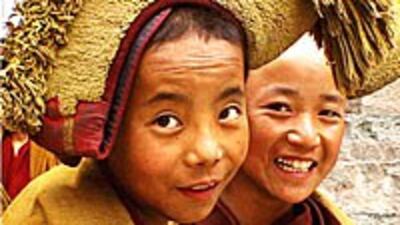
WASHINGTON—Buddhism remains a living force in historically Tibetan regions of China, but the exodus of Buddhist teachers is taking a heavy toll, according to the director of a new documentary, “Vajra Sky Over Tibet.”
John Bush, who wrote and directed the film, said his team was unable to include interviews with ordinary Tibetans because they feared reprisals from Chinese authorities.
"When we've talked to people in Tibet as we traveled, we heard over and over, 'We want our teachers back. We need our teachers,'" Bush said in an interview, referring to the lamas who impart the teachings of Buddhism.
When we’ve talked to people in Tibet as we traveled, we heard over and over, ‘We want our teachers back. We need our teachers.’
Vajra Sky over Tibet
Lamas in exile
“It’s an important part of the transmission of this tradition,” Bush said. Numerous leading lamas have fled to exile in India, or other countries along China’s southern and western border, since China annexed the region in the late 1950s.
Chief among them is the Dalai Lama, who was forced into exile in India in 1959 following an unsuccessful uprising against Chinese rule.
“Vajra Sky Over Tibet” was filmed at well-known religious sites in central Tibet. It premiered this year in Bangkok and has been shown in theaters and at film festivals across the United States and Europe.

Sites that appear in the film include the monasteries of Ganden and Drepung, both near the Tibetan regional capital, Lhasa; the Jokhang Temple inside Lhasa; the Gyantse Kumbum stupa; Zhalu monastery; and Tashilhunpo monastery, outside Shigatse, Tibet's second-largest city.
Bush told RFA’s Tibetan service that he and his cameraman came under occasional surveillance while filming, although “We weren’t shooting anything that was politically sensitive.”
“We didn’t ask for any permission from the Chinese authorities to shoot the film, and none was given to us,” said Bush, who has also made films in Southeast Asia. “We went as pilgrims, ourselves.”
“We were going to places that were open to the public, and we were filming it basically to show the devotional tradition of Tibetans...We weren’t doing anything that was out of the ordinary.”

“Unfortunately, we were not able to include any interviews with people because of possible reprisals,” Bush said. “So it’s really more relating what people expressed to us and how people talked to us.”
In one scene in the film, Tibetan children’s faces glow with happiness at the sight of thousands of butter lamps lighting the shrines of the Jokhang Temple—formerly used by the Chinese as a slaughterhouse but now restored to religious use.
In another, hundreds of Tibetan and Chinese devotees unfurl a vast thangka—a religious scroll painting—of the Buddha on a hillside at Drepung monastery just north of Lhasa.
Strong faith
Bush said Western audiences are often surprised that Tibetans, after long years under Chinese rule, have “such a strong relationship with their faith.”
“There’s a misperception in the West that Tibetan Buddhism is kind of finished in Tibet. My experience is that it is anything but. In spite of all the hardships and difficulties that the Tibetan Buddhist [community] has had, the strength of their faith and the ardor of their devotion is very powerful.”

Chinese authorities have drawn sharp international criticism for their heavy-handed approach to Tibetan Buddhist monasteries.
In its 2005 report on human rights around the world, the U.S. State Department said Beijing’s human rights record in Tibetan areas “remained poor, and the level of repression of religious freedom remained high. The government continued to view the Dalai Lama with suspicion and tended to associate Tibetan Buddhist religious activity with separatist sympathies.”
Chinese authorities continue to ban images of Gendun Choekyi Nyima, the boy recognized by the Dalai Lama as the Panchen Lama, in competition with the Chinese government’s chosen Panchen Lama.
Human rights activists say the boy chosen by the Dalai Lama remains under house arrest somewhere in China.
Tibet has for years appealed to the imagination of Western filmmakers.
Recent feature films about the region include “Kundun,” based on the life of the Dalai Lama, and “Seven Years in Tibet,” based on the story of an Austrian mountain climber who taught and befriended the Dalai Lama as China took over the region.
Original reporting by Rigdhen Dolma for RFA’s Tibetan service. RFA Tibetan service director: Jigme Ngapo. Written in English with additional reporting by Richard Finney. Edited by Sarah Jackson-Han.
